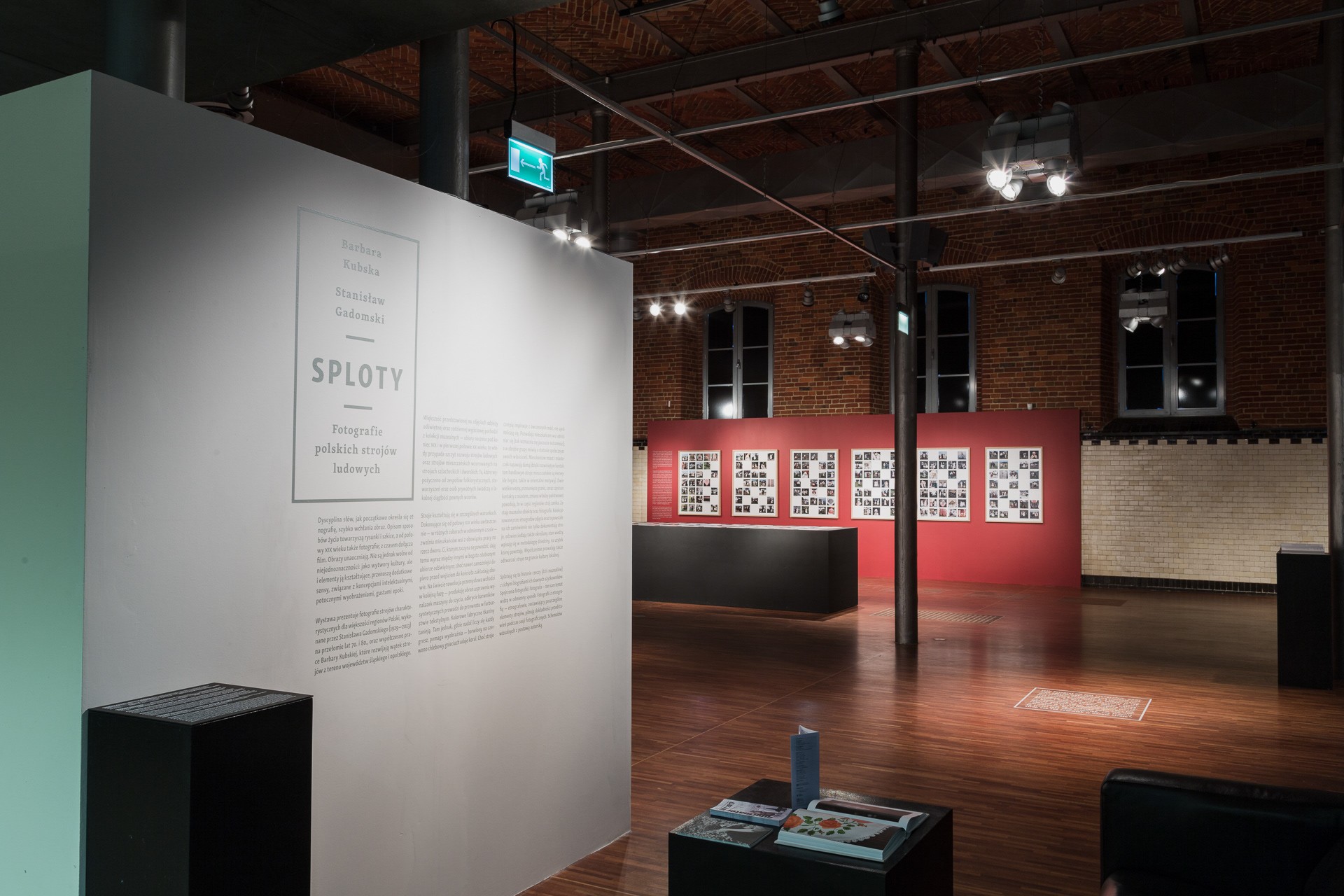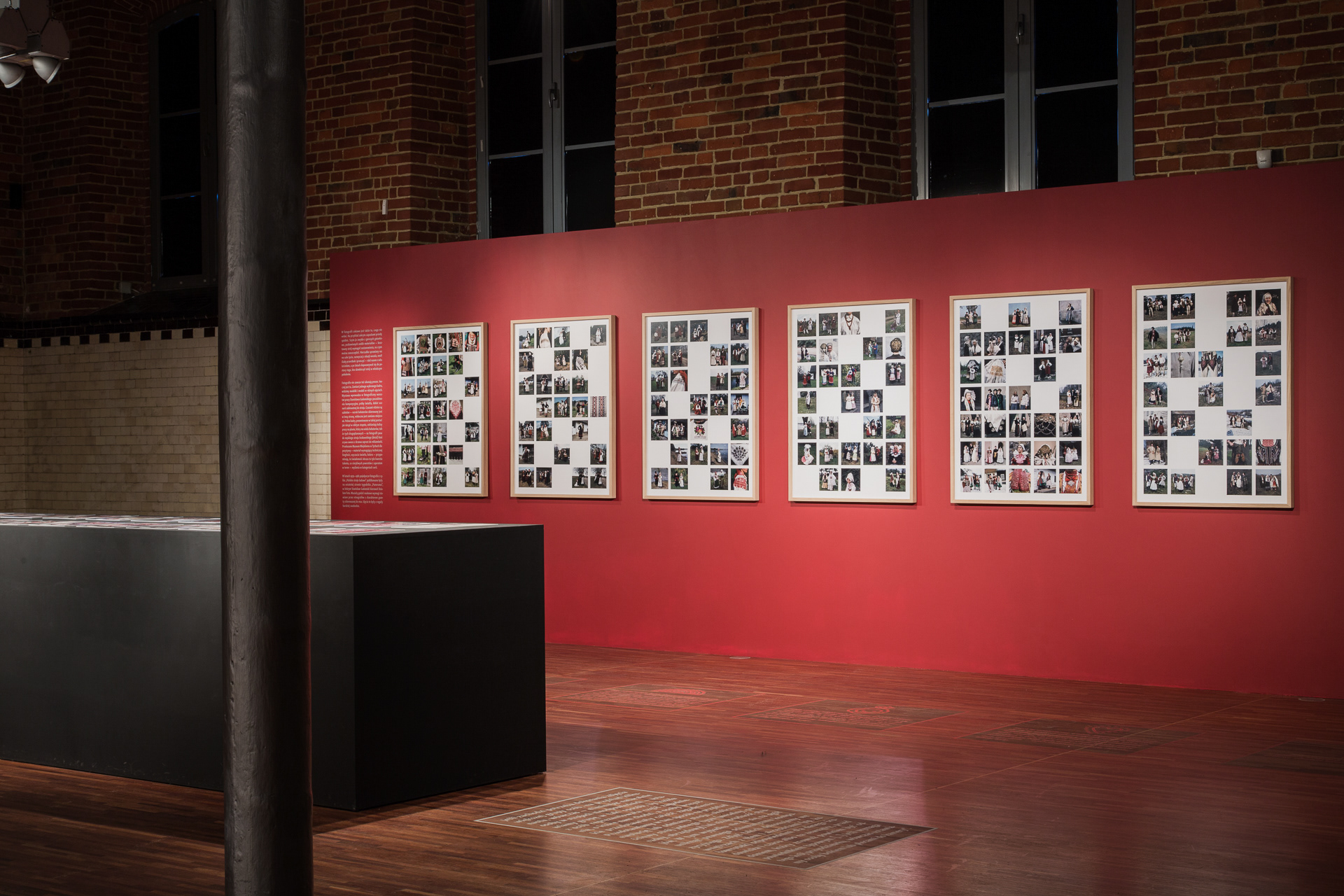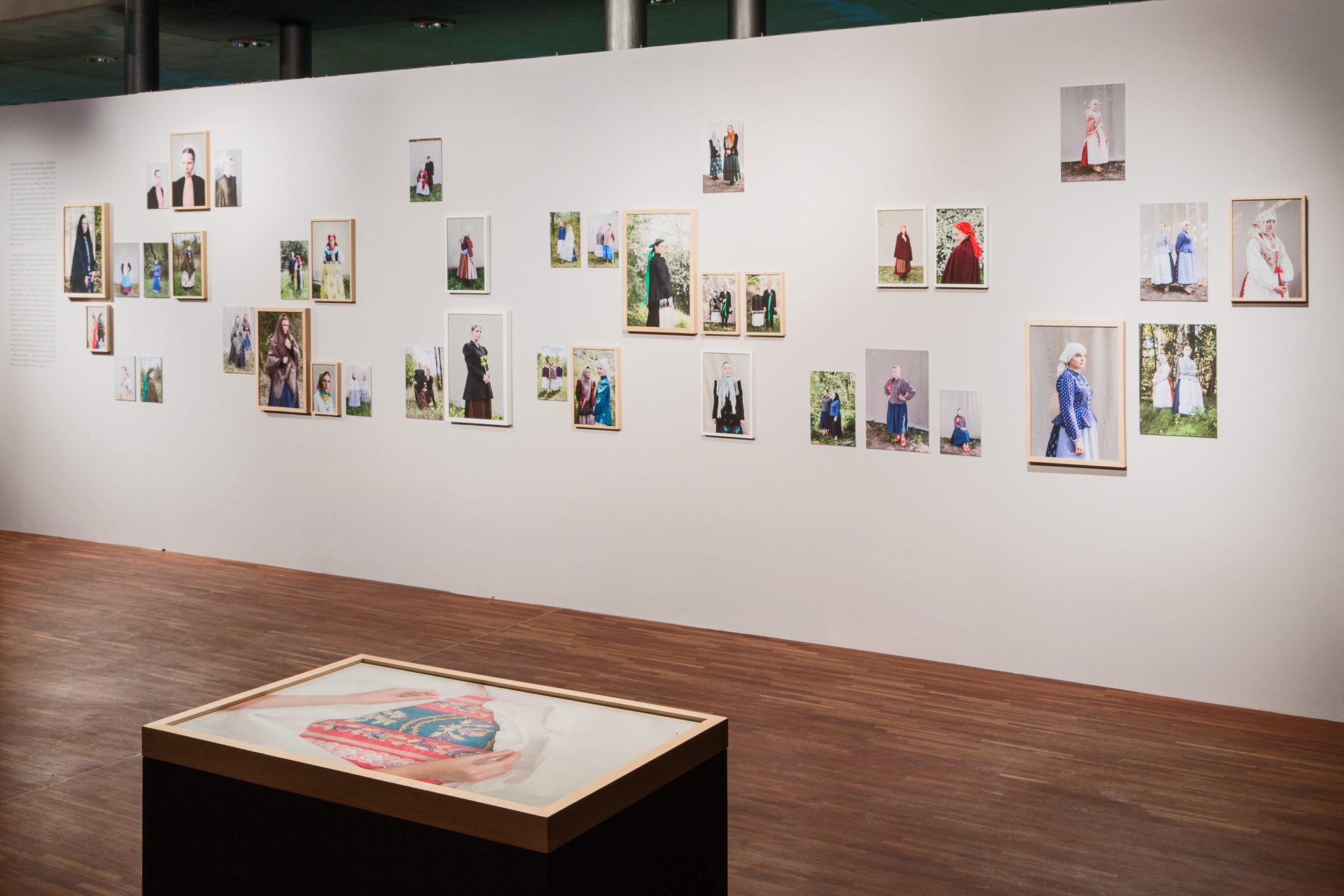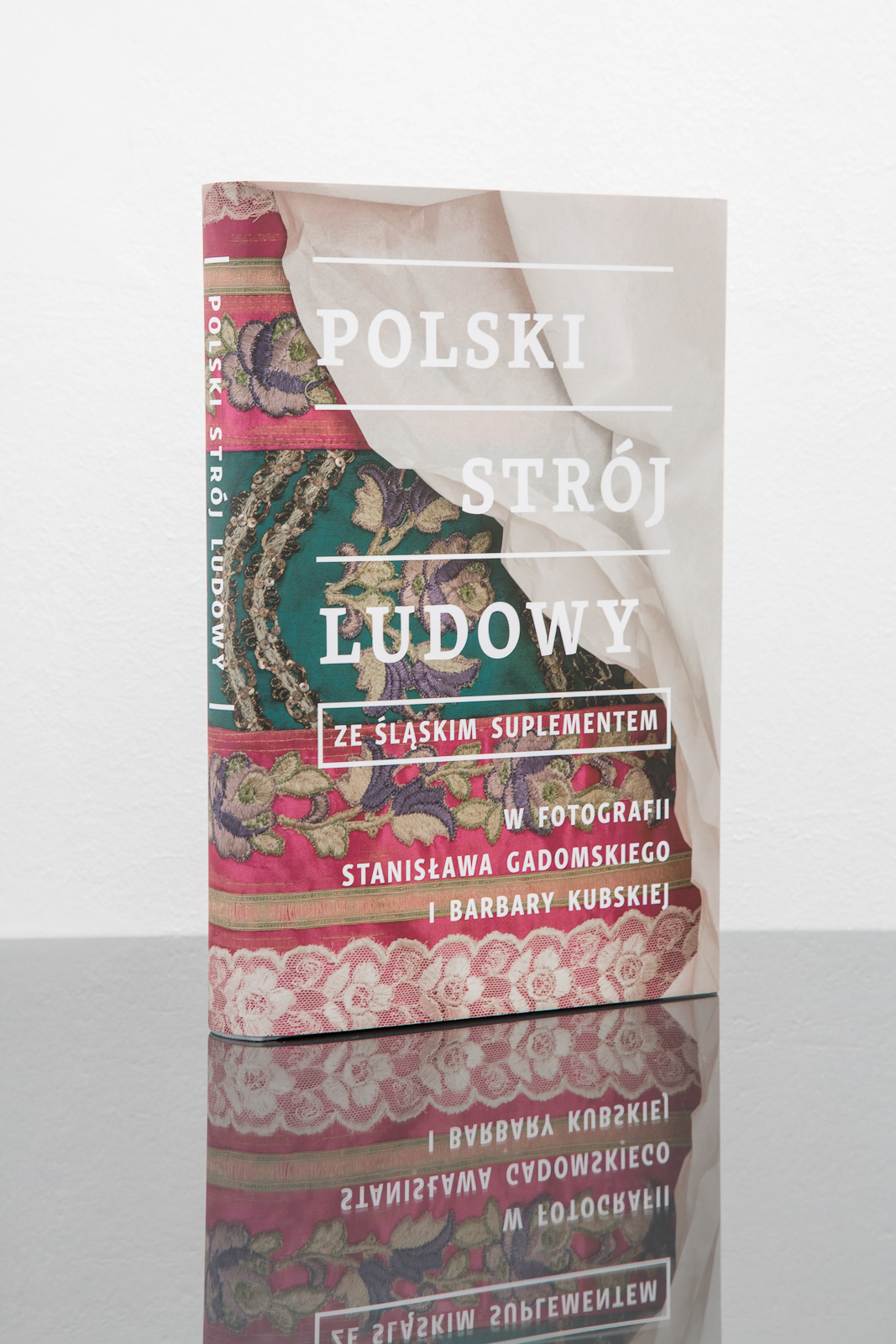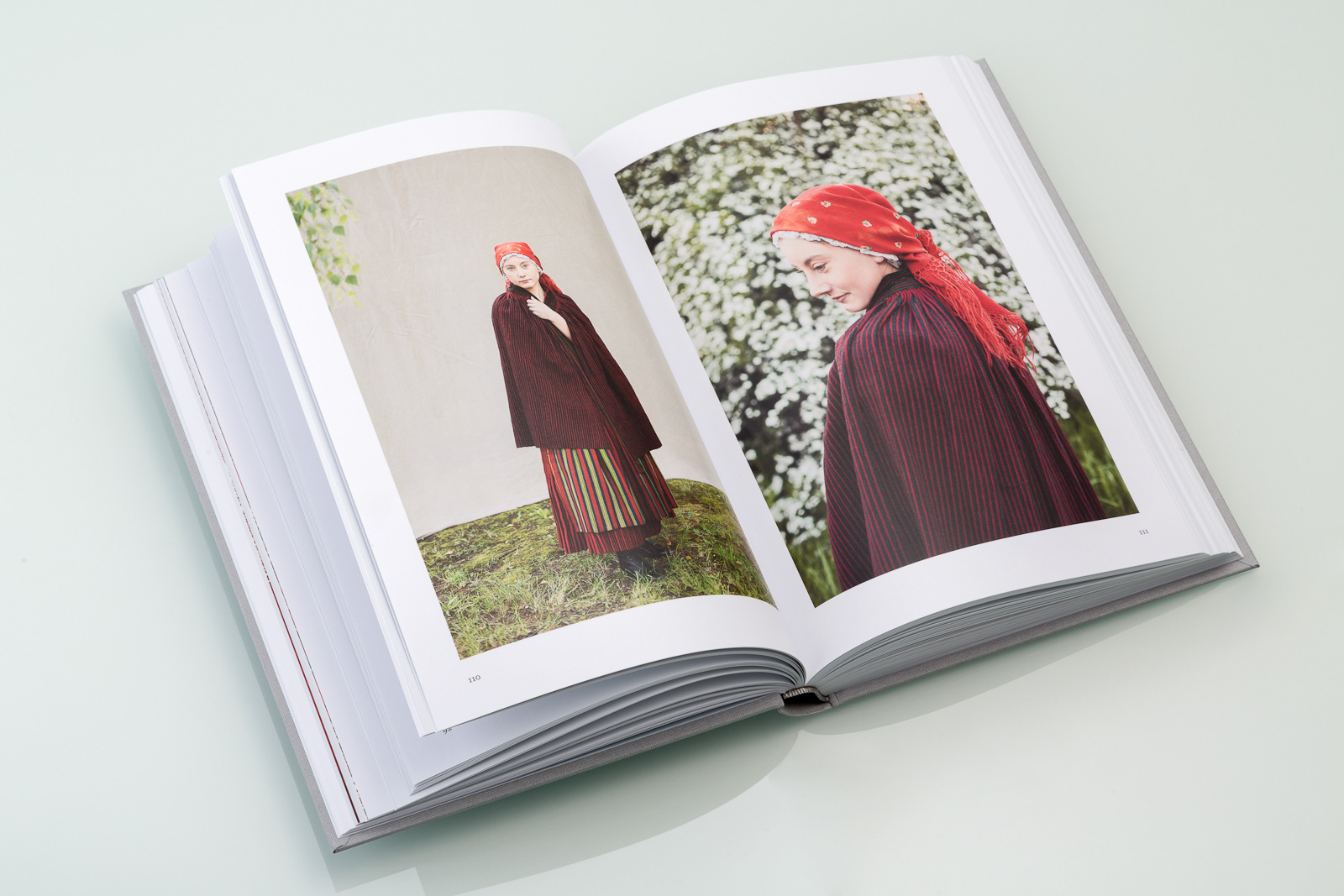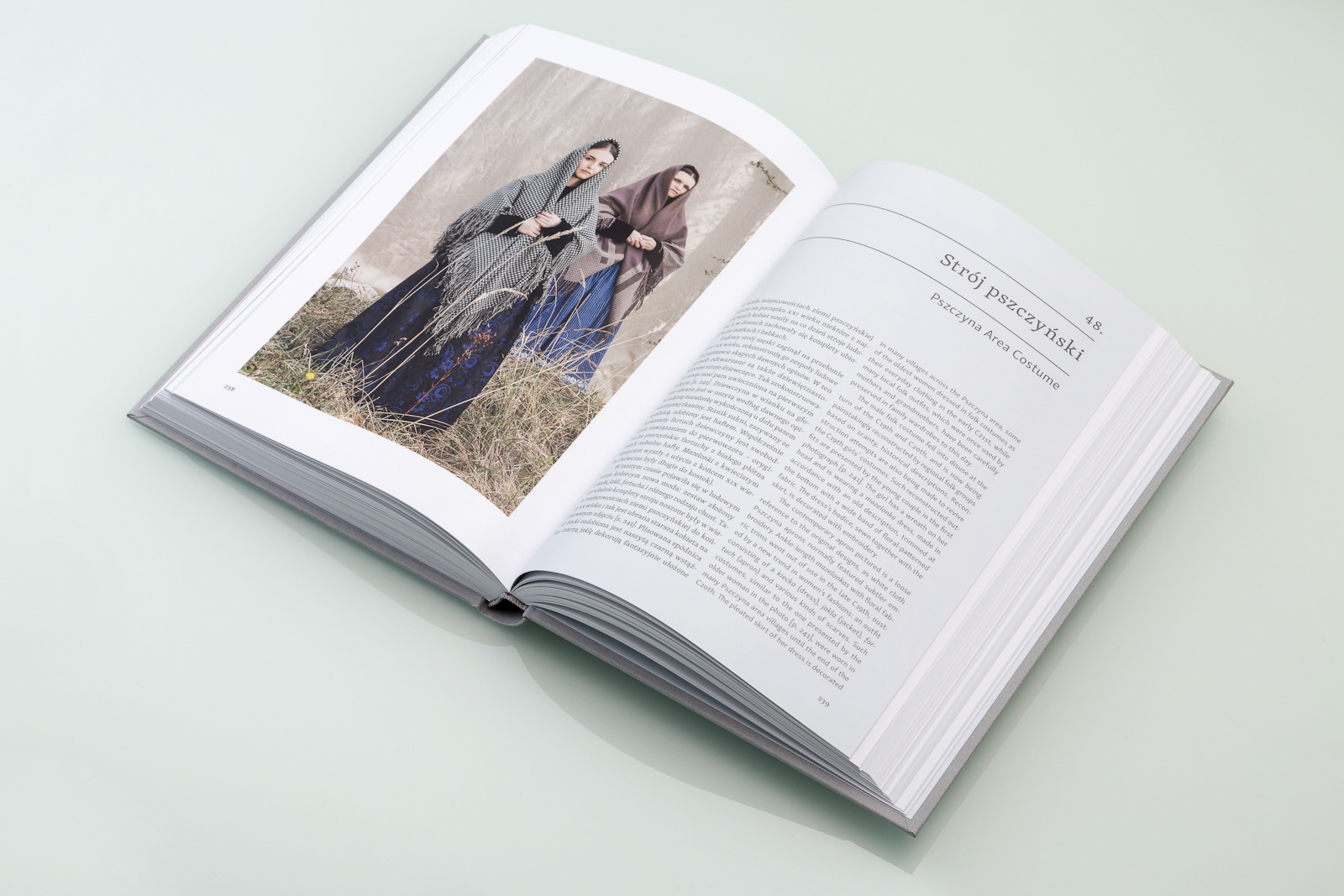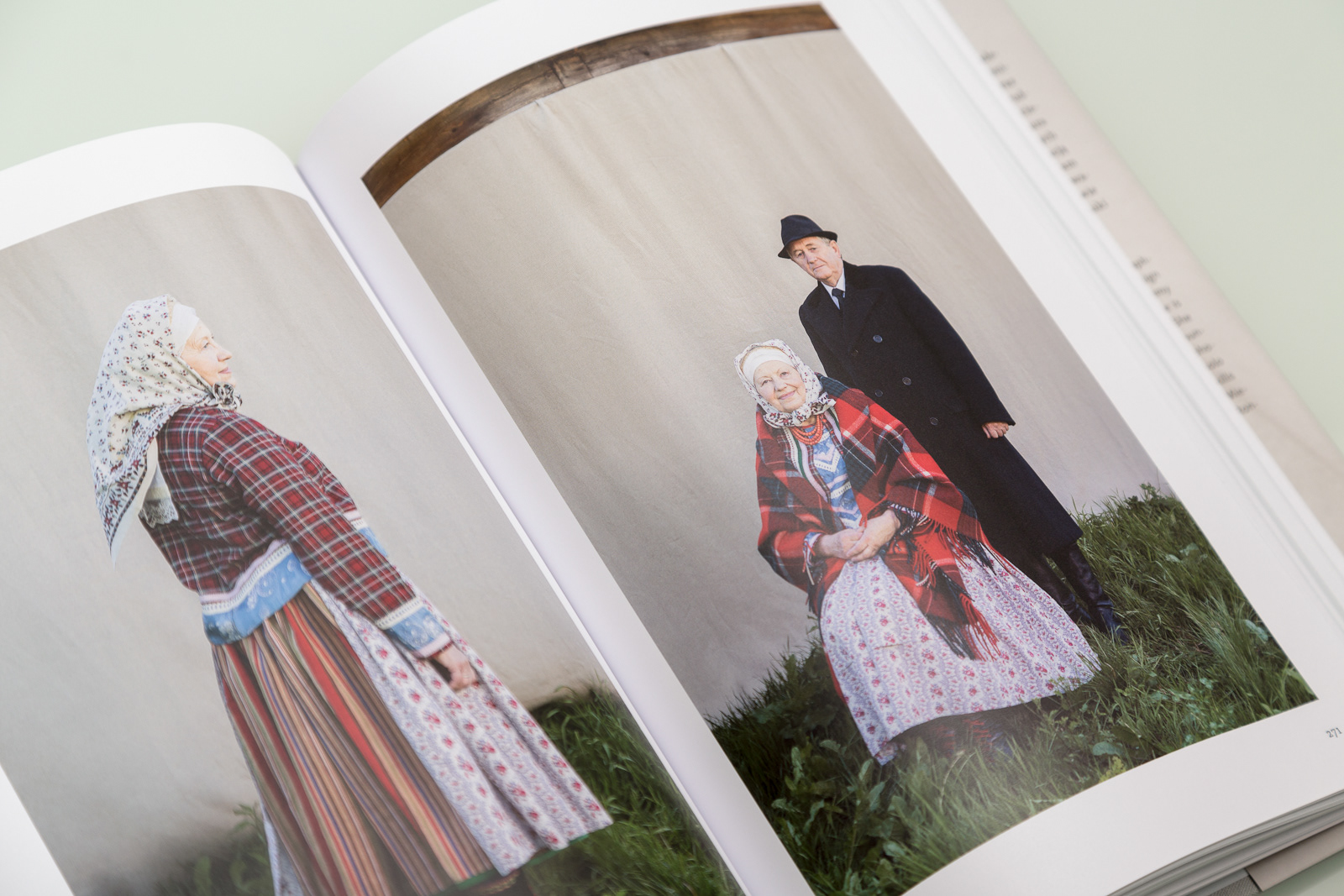
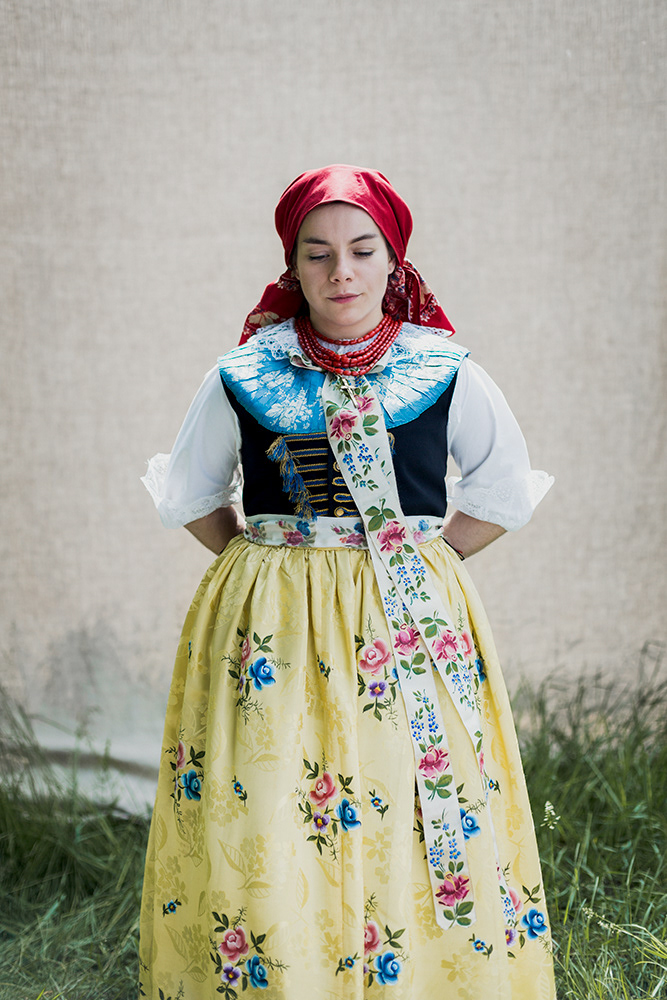





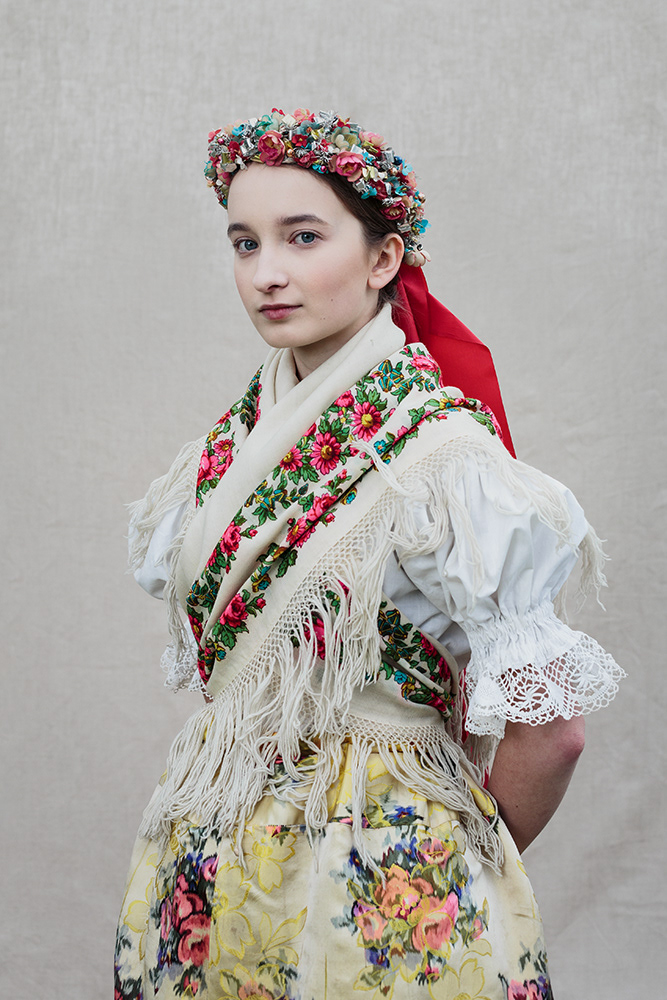


Weaves
Sploty
Sploty
2016
EN
The project at the invitation of the Tychy City Museum. The “Sploty” (Weaves) exhibition was created in collaboration with the Culture of Image Foundation and Tychy City Museum.
The project at the invitation of the Tychy City Museum. The “Sploty” (Weaves) exhibition was created in collaboration with the Culture of Image Foundation and Tychy City Museum.
Almost two hundred photos feature folk costumes in the collections of ca. twenty-five museums in Poland and eleven folklore bands. Stanisław Gadomski (1929–2013) took most of them at the turn of 1970s and 80s. The colourful diapositives that he presented to the Tychy City Museum reflect the charm of festive folk costumes that had not gone unnoticed by ethnographers – the collections they launched in the late 19th century allow the references and reinterpretations today. Such a task was undertaken by Barbara Kubska (born in 1986), a photographer connected with the Academy of Fine Arts and Design in Katowice. Her characteristic supplement to Gadomski’s photos features costumes from the region of Upper Silesia and neighbouring areas – their individual elements were brought together by an ethnographer, Krystyna Pieronkiewicz-Pieczko, by means of the internal resources of the Municipal Museum in Tychy, collections of six other museums, three folklore associations and private archives.
The exhibition presented at the museum resonates more than the historic background on which such diverse costumes occurred (some of them have already disappeared) – the late 19th and early 20th centuries, when the majority of clothes featured in the photos were worn, was the time of industrial revolution, manumission and two world wars. Moreover, the exhibition addresses the subject of the very photography as a medium serving documentation (in ethnography) and popularisation purposes (in the media). It poses a question about the extent to which photography enables original expression, free of rigours and patterns imposed by other disciplines, for which it is made.
Barbara Kubska’s works establish a dialogue with Stanisław Gadomski’s photographs, taken almost forty years ago for the readers of “Panorama” magazine. Put together, they tell a story of collaboration between photographers and ethnographers, responsible for the accuracy of presentation of costumes during photo shoots then and now. They feature their authors’ independent perspectives on the photograph and their way of thinking about portrait – after all, the clothes used to belong to somebody before becoming museum items. We come to realise that perception depends not only on sensitivity and individual sense, but also on the times – certain idealistic, artistic and aesthetic canons.
If Kubska’s and Gadomski’s photos could be interwoven like threads of fabric, they would sum up to a colourful image, but the intuitions of individual authors would still be discernible.
Text: Ewelina Lasota
PL
Cykl fotografii, wystawa „Sploty”, książka „Polski strój ludowy ze śląskim suplementem w fotografii Stanisława Gadomskiego i Barbary Kubskiej”
Cykl fotografii, wystawa „Sploty”, książka „Polski strój ludowy ze śląskim suplementem w fotografii Stanisława Gadomskiego i Barbary Kubskiej”
Projekt powstał na zaproszenie Muzeum Miejskiego w Tychach.
Wystawa „Sploty” powstała we współpracy Fundacji Kultura Obrazu i Muzeum Miejskiego w Tychach.
Wystawa „Sploty” powstała we współpracy Fundacji Kultura Obrazu i Muzeum Miejskiego w Tychach.
Blisko dwieście fotografii ukazuje stroje ludowe z kolekcji ok. dwudziestu pięciu muzeów z całej Polski oraz jedenastu zespołów folklorystycznych. Większość z nich Stanisław Gadomski (1929–2013) wykonał na przełomie lat 70. i 80. Kolorowe diapozytywy, które przekazał Muzeum Miejskiemu w Tychach, oddają urok odświętnych ubiorów mieszkańców wsi, któremu nie oparli się pierwsi etnografowie – to dzięki zapoczątkowanym przez nich pod koniec XIX w. kolekcjom możemy dziś sięgać do źródeł i na nowo je interpretować. Zadania tego podjęła się Barbara Kubska (ur. 1986), fotografka związana z Akademią Sztuk Pięknych w Katowicach. Swoisty suplement do fotografii Gadomskiego, którego jest autorką, prezentuje stroje z terenu Górnego Śląska i ziem sąsiednich – poszczególne ich elementy skompletowała etnografka Krystyna Pieronkiewicz-Pieczko, korzystając z zasobów własnych Muzeum Miejskiego w Tychach, zbiorów sześciu innych muzeów, trzech stowarzyszeń folklorystycznych i kolekcji prywatnych.
Na prezentowanej w muzeum wystawie echem odbija się nie tylko historia, na tle której tak różnorodne stroje zaistniały (a niektóre zdążyły zaniknąć) – koniec XIX wieku i pierwsza połowa XX, kiedy w użyciu jest większość przedstawionych na fotografiach ubiorów, to czas rewolucji przemysłowej, uwłaszczenia chłopów, ruchów narodowościowych i dwóch wielkich wojen. Wystawa porusza także temat samej fotografii jako medium służącego celom dokumentacyjnym (w etnografii) i popularyzatorskim (w mediach). Stawia pytanie, na ile fotografia, choć umożliwia autorską wypowiedź, jest wolna od rygorów i schematów narzucanych przez dziedziny, na użytek których powstaje.
Prace Barbary Kubskiej wchodzą w dialog z fotografiami Stanisława Gadomskiego, wykonanymi prawie czterdzieści lat temu z myślą o czytelnikach tygodnika „Panorama”. Razem mówią o współpracy fotografów i etnografów – jak dawniej, tak i teraz odpowiedzialnych za dokładność przedstawień strojów podczas sesji fotograficznych. Prezentują niezależne spojrzenia autorów na fotografowany przedmiot oraz ich sposoby myślenia o portrecie – przecież ubiory te, nim stały się muzealiami, były czyjąś własnością. Uświadamiają, że patrzenie zależy nie tylko od wrażliwości i indywidualnego wyczucia, ale także czasów, w których się tworzy – ideowych, artystycznych czy estetycznych kanonów.
Gdyby móc fotografie Kubskiej i Gadomskiego przepleść, jak przeplata się wątki tkaniny, powstałby wielobarwny obraz – łatwo byłoby jednak odróżnić, kogo i jak poprowadziła intuicja.
Tekst: Ewelina Lasota
